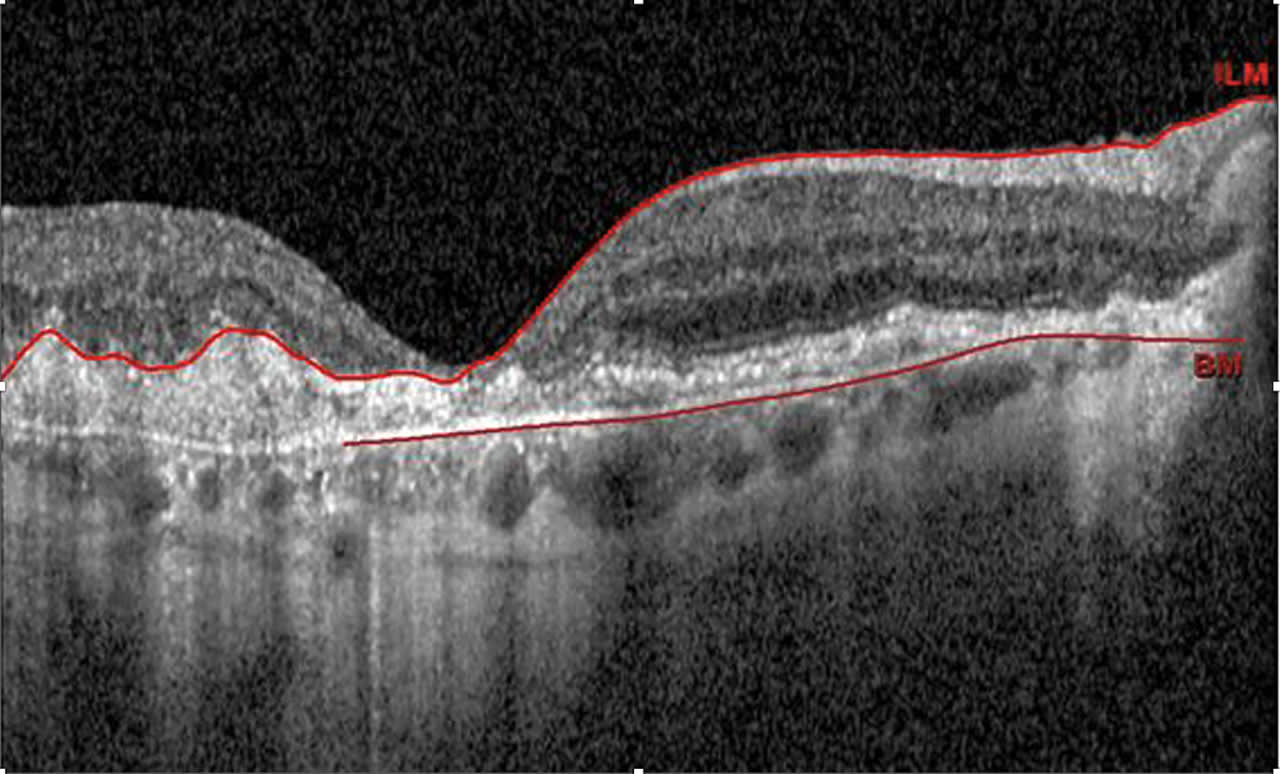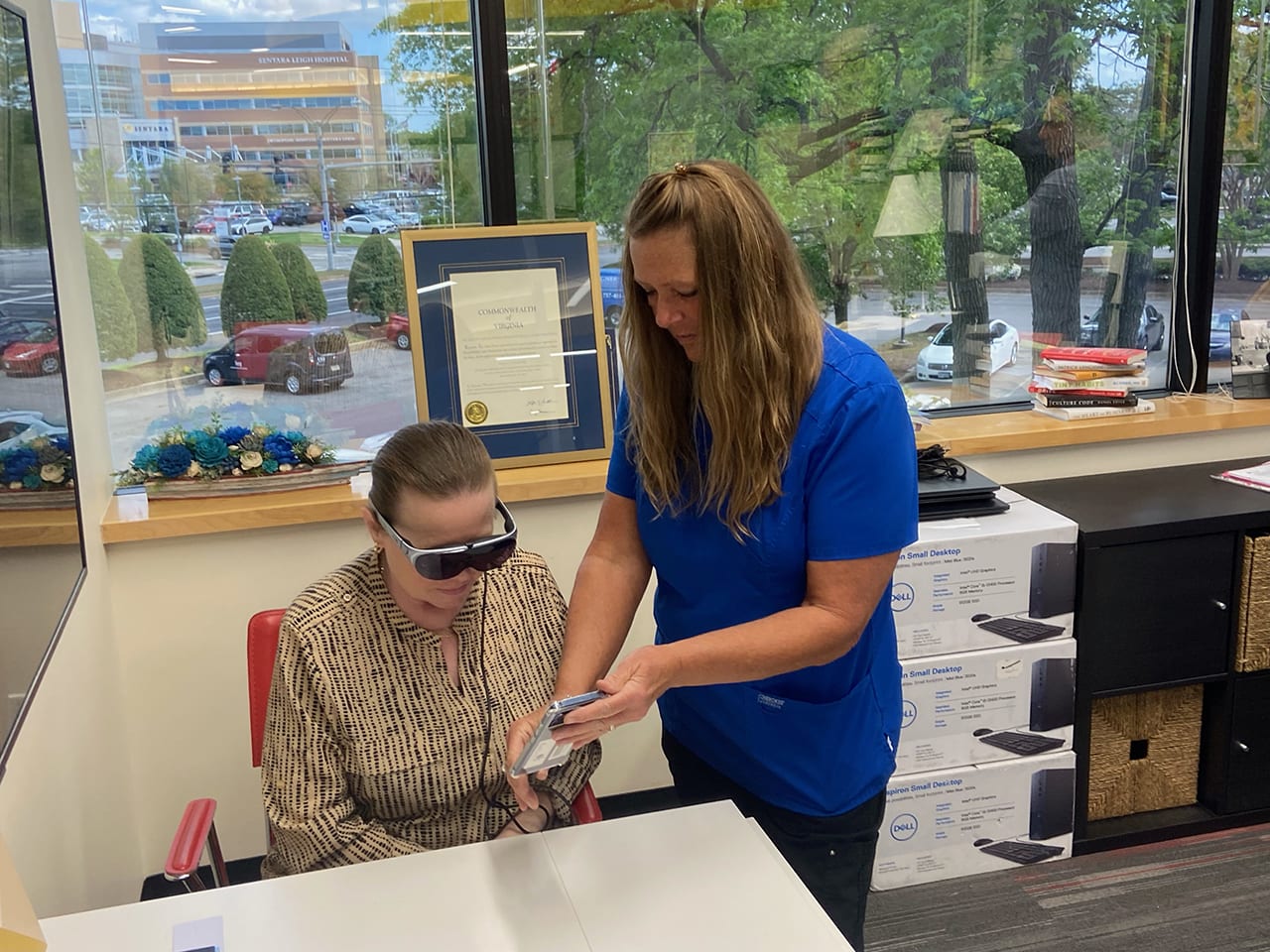Age-related eye diseases affect millions of older Americans, resulting in loss of visual acuity. An estimated 18.3 million Americans have early age-related macular degeneration (AMD), while another 1.5 million are in the vision-threatening late stages of AMD.1,2 About 3 million Americans have glaucoma, with half of the cases being undiagnosed, and nearly 9.6 million Americans are diagnosed with diabetic retinopathy.2 These diseases pose complex challenges, leading to the gradual loss of central vision.
For many older Americans, low vision caused by retinal diseases interferes with their ability to function in daily life. People with low vision—sometimes defined as having a best-corrected visual acuity (BCVA) of 20/60 or worse3—are likely to have trouble doing everyday tasks such as reading signs, navigating busy streets, or recognizing faces even when wearing glasses or contact lenses.
Despite ongoing research, clinical treatments often fall short, prompting the exploration of innovative solutions to patients affected by low vision. At the Wagner Kapoor Institute, located in the Hampton Roads region of Virginia and North Carolina, the frustration of limited treatment options has led us to embrace new approaches.

Wearable Technologies
Wearable assistive technology to help patients read or watch television has been available for more than a decade. In 2013, eSight Eyewear released the first wearable low-vision device, which used high-definition cameras to capture real-time images. These were processed and displayed on high-resolution screens in front of the user’s eyes, making it easier to see details. Since then, similar devices have been developed by companies like OrCam Technologies, Zoomax Technology, Vision Buddy, NuEyes, Jordy, Eyedaptic, and IrisVision. (Editor’s note: Mitul Mehta, MD, MS, the co-medical editor of New Retinal Physician, serves as chief medical officer of Eyedaptic.)
In recent years, improvements in augmented reality (AR) and virtual reality (VR) technologies have enabled many new features for low-vision wearables, from enlarging fonts to improving image contrast.
In our practice, we’ve had good success with the Eye5, a wearable device from Eyedaptic that was created to assist people with low vision, particularly those suffering from macular degeneration. By introducing our patients to this technology, we are able to broaden access for those who are challenged with the loss of central vision.
The Eye5 device consists of smart glasses specifically designed to be lightweight and comfortable for all-day wear. They can be worn over the patient’s regular glasses and are plugged into their smartphone. The Eye5 uses a compact, high-resolution camera mounted on the eyeglass frame to capture live video of the wearer’s environment. This video feed is processed in real-time by software on the phone that adapts the images to the user’s specific vision needs. This includes enhancing contrast, highlighting edges, and zooming into critical areas, which helps users with central vision loss to better utilize their peripheral vision.
The processed images are then displayed on high-definition screens located in front of the user’s eyes, effectively simulating a natural viewing experience. The Eye5 comes with various viewing modes tailored to different activities such as reading, watching TV, or viewing landscapes. This versatility ensures that users can adjust the settings based on their immediate visual requirements.
After trying several other low-vision wearables, it seems that our patients have been most satisfied with the Eye5. Some of their reasons are that the device provides better visualization, whether reading or detecting faces, and its overall ease of use without cumbersome wires or hard-to-manage technology.
One area that patients seem to really like is the adaptive zoom function, which helps them to visualize at different focal lengths. In general, the Eye5 device functions best when the patient is performing relatively stationary tasks, where the head is not moving around excessively. Ideal tasks include sitting and reading, watching television, shopping, playing bingo or other games, and having conversations with friends or family.
Finding the Right Patient
Certainly, most older patients would agree that the best time for vision improvement was yesterday, and the next best time is today. I’ve found that it is useful to ask my patients with advanced dry AMD a few extra questions, to determine how their disease specifically impacts their vision-related quality of life. While the impact of geography atrophy (GA) can be wide-ranging, most patients will cite 1 or 2 specific activities they once enjoyed but no longer can perform due to their GA encroaching further on their central vision. I have found this is a strong positive predictive question of a patient who will do well on a trial with the Eye5 device.
Clinically, I am looking for patients with geographic atrophy who have a visual acuity of 20/70 to 20/200. My strongest predictive value of success with a low-vision wearable is someone who recently had foveal encroachment of atrophy. This results in a step-down in vision for these patients.
To give one example, I recently had an 81-year-old male patient whose BCVA in his right eye has fluctuated from 20/70-1 to 20/100 over the past two years. An optical coherence tomography (OCT) scan showed foveal encroachment from retinal pigment epithelium atrophy secondary to AMD (Figure 1). The patient, a self-described avid reader, was unhappy at being unable to consistently enjoy his favorite hobby, so we suggested he try the Eye5 device. The patient reported that with the device, he has been able to resume regular reading, which has improved the quality of his life.

Another case involved a 76-year-old female who has had advanced dry AMD for several years and has experienced gradually declining eyesight. Her visual acuity has typically been 20/150 to 20/200 over the last year and a half. When she was fitted for the Eye5, this patient was brought to tears because she could clearly see her granddaughter’s face for the first time. After purchasing the device, she visited different family members and grandchildren around the country to visualize them in person with newfound clarity.
Bringing Joy and Hope
As busy retina specialists, we can’t do this alone, so we enlist the help of our staff to be the main patient-facing components when implementing this technology. Joy Tribble, our clinic’s medical coordinator, plays a crucial role in guiding patients through the experience with this advanced visual aid. Her dedication to understanding each patient’s unique journey facilitates the seamless integration of the technology without taking up our doctors’ chair time.
The patient experience unfolds with a prompt from a WKI doctor, leading to a demonstration facilitated by Joy (Figure 2). Patients often are initially skeptical, but hopeful. Many experience elation as the technology opens new possibilities, from watching TV to recognizing facial features.
In an era of rapid technological advancement, augmented reality visual aids offer hope for those who have lost essential visual capabilities. While we anticipate further advancements in artificial intelligence and algorithmic escalation, our focus must remain on providing sustainable improvements in patients’ vision-related quality of life. As we assess our patients’ OCT scans and fundus autofluorescence images more closely, I would encourage fellow retina clinicians to consider adding low-vision wearable technology like the Eye5 to your armamentarium for approaching patients with vision loss related to dry AMD. NRP
References
1. American Academy of Ophthalmology. Eye health statistics. Accessed May 29, 2024. https://www.aao.org/newsroom/eye-health-statistics
2. Rein DB, Wittenborn JS, Burke-Conte Z, et al. Prevalence of age-related macular degeneration in the US in 2019. JAMA Ophthalmol. 2022;140(12):1202-1208. doi:10.1001/jamaophthalmol.2022.4401
3. Gopalakrishnan S, Velu S, Raman R. Low-vision intervention in individuals with age-related macular degeneration. Indian J Ophthalmol. 2020;68(5):886-889. doi:10.4103/ijo.IJO_1093_19
___________________________
Thank you to New Retinal Physician for the feature. Read the full article here.
